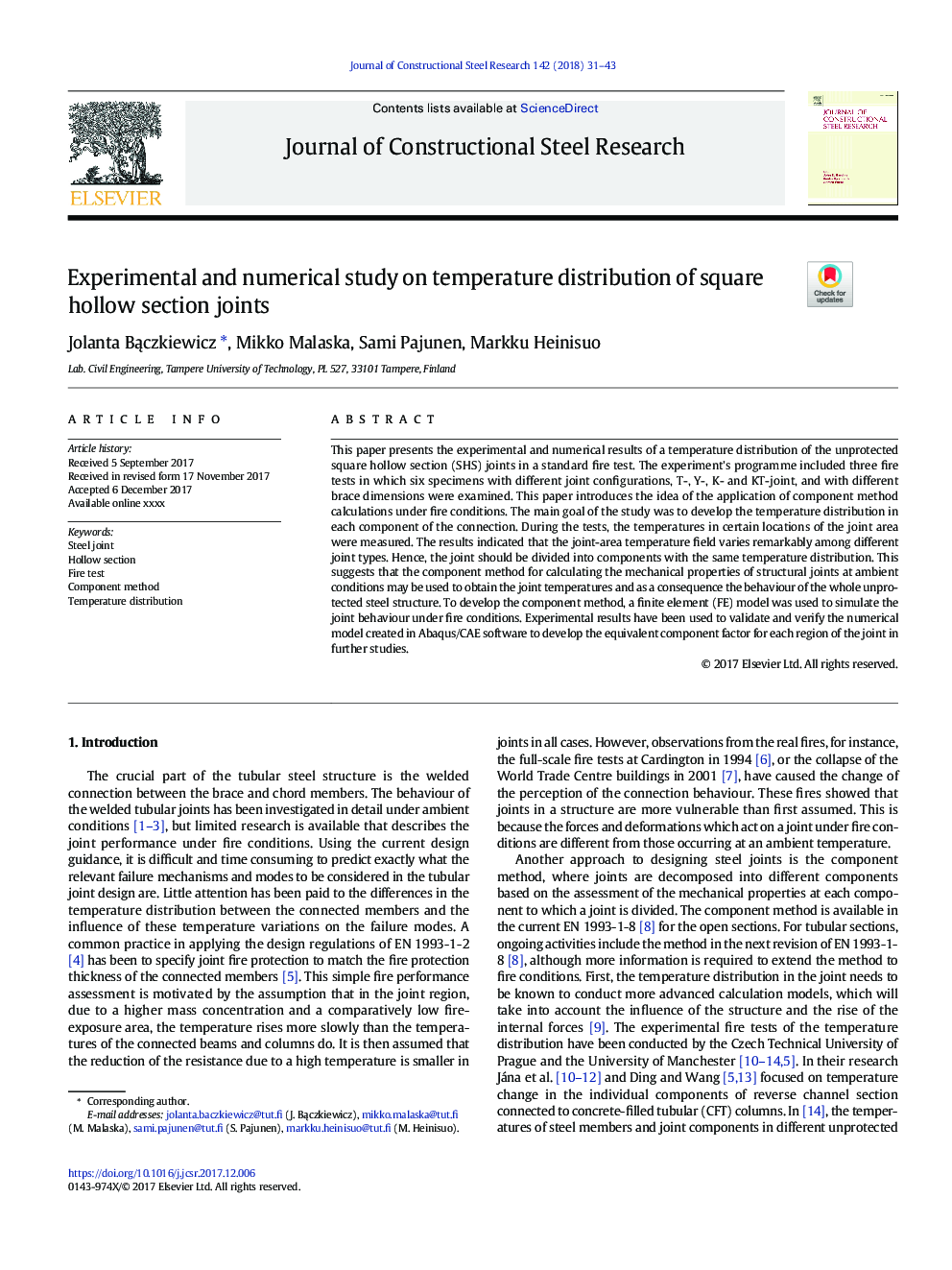| Article ID | Journal | Published Year | Pages | File Type |
|---|---|---|---|---|
| 6751051 | Journal of Constructional Steel Research | 2018 | 13 Pages |
Abstract
This paper presents the experimental and numerical results of a temperature distribution of the unprotected square hollow section (SHS) joints in a standard fire test. The experiment's programme included three fire tests in which six specimens with different joint configurations, T-, Y-, K- and KT-joint, and with different brace dimensions were examined. This paper introduces the idea of the application of component method calculations under fire conditions. The main goal of the study was to develop the temperature distribution in each component of the connection. During the tests, the temperatures in certain locations of the joint area were measured. The results indicated that the joint-area temperature field varies remarkably among different joint types. Hence, the joint should be divided into components with the same temperature distribution. This suggests that the component method for calculating the mechanical properties of structural joints at ambient conditions may be used to obtain the joint temperatures and as a consequence the behaviour of the whole unprotected steel structure. To develop the component method, a finite element (FE) model was used to simulate the joint behaviour under fire conditions. Experimental results have been used to validate and verify the numerical model created in Abaqus/CAE software to develop the equivalent component factor for each region of the joint in further studies.
Related Topics
Physical Sciences and Engineering
Engineering
Civil and Structural Engineering
Authors
Jolanta BÄ
czkiewicz, Mikko Malaska, Sami Pajunen, Markku Heinisuo,
